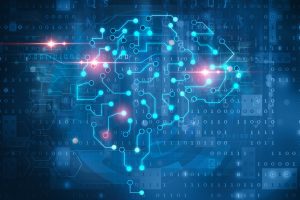This audio was created using Microsoft Azure Speech Services
Working in a data center, IT professionals undoubtedly come across electrical terms from time to time that they may not completely understand, or perhaps don’t understand at all. But in order to have meaningful conversations with the facilities folks who supply power to all that IT equipment, it helps to have a working knowledge of the various systems involved in delivering that power.
It also makes sense from a monetary standpoint because a data center’s electrical system, including the UPS and generator, represents 40% to 50% of the total data center capital expense (not including the building). This is according to a new white paper from Schneider Electric titled, “Electrical Distribution Equipment in Data Center Environments.” The paper is a good read for IT folks who want to learn something about the concepts, terminology, and equipment used in electrical distribution systems in data centers and the rest of the building that houses the data center. It will educate IT pros on some of the key terms and give them a frame of reference with respect to electrical systems.
For example, in most dedicated data center buildings, the utility supplies a medium voltage (MV) service. The MV service is stepped down to low voltage (LV) by a transformer and LV power is distributed to the various IT equipment. LV power is what we’re all familiar with in our homes and offices. Smaller data centers may be supplied LV power from the utility while massive ones may get high voltage (HV) power.
The paper also walks you through some electrical terms you’ve likely heard, and perhaps had no real clue what they meant. Did you know, for example, that the term “AC three-phase system,” means that the voltage is provided by each of three separate coils of a transformer? I, for one, did not, but three phase transformers are the type typically found in data centers.
And then we’ve got the terms “3-wire” and “4-wire,” which are used to describe electrical system design. The term 3-wire means that there are three “hot” conductors, while 4-wire means that in addition to three “hot” conductors there is a fourth “neutral” conductor. As the paper explains, the neutral conductor is required to supply power to most IT loads. The paper also explains why ground or “protective earth” wires are so important – small matter of protecting humans against electrocution and equipment against damage.
You’ll also learn what the rated current of electrical equipment refers to and why exceeding it is a bad idea that can lead to equipment failure or fire. Some equipment in the data center must be protected against overloads and short circuits, known as “over-current” conditions. The paper explains which equipment this applies to and why it’s important.
You’ll also learn about the various devices that power flows through as it makes its way from the utility to your IT load. In addition to the MV/LV transformer, that may include UPS systems, power distribution units (PDUs) and remote power panels (RPPs), a busway, panelboard and rack PDUs. The paper explains at a high level the role of each component.
Power is obviously important to the operation of your IT equipment in the data center but having some fundamental knowledge of how it works can also play a role in ensuring the safety of data center equipment and personnel. To learn more check out white paper no. 61, “Electrical Distribution Equipment in Data Center Environments.”




Conversation
Nathan Buuck
11 years ago
Very handy. I’ve been through the Data Center Certified Association program but this still revealed many things about electrical distribution that I didn’t know. I’ll be keeping this WP on hand for future reference/refreshers.
Ben
11 years ago
Hi Nathan – great to get your feedback on our educational content. We have a White Paper App for iOS & android devices, which is great for when you are travelling, just search Schneider Electric White Papers in the google or apple store and you will find it.